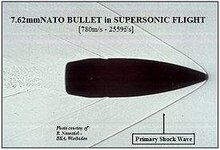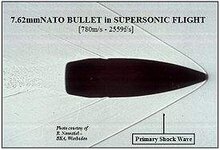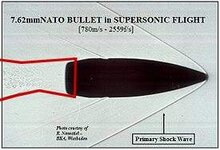Bronze Lifetime
- Messages
- 5,834
- Reactions
- 2,176
Yet the choice of bullets for precision shooting is almost always a bullet with a center of mass purposely moved back by by making it a hollow point. Match bullets have no requirement in the traditional sense, expansion in game animals, it's done to enhance their stability. Go figure.
Fast bullets are supersonic and have a shock wave cushion in front of them in a way that the nose doesn't really contact the solid air. The base of the bullet on the other hand has the air collapsing onto it. When a jacketed bullet is formed either the base or the nose will be open because the jacket is punched and formed from one piece of copper. The perfection of the base of the bullet has far more affect on accuracy than does the nose due to that air collapsing on it.
Match bullets are "hollow point" only for that reason. With the base being fully jacketed it can be precise. If lead were exposed at the nose as with hunting bullets, it would be far less concentric and smooth than if it's left back a little, and only the copper is exposed and accurately formed. Leaving the nose open allows the base to be solid copper which can be precisely formed, and that's where accuracy is most affected.
When a pointed supersonic bullet is in flight, it doesn't even "know" it has a point. The drag on the back from the air collapsing onto it (along with the fast spin) keeps the bullet going straight instead of yawing.
Put even a small nick on the back corner of a bullet and it will lose its accuracy. Not so much with a small nick on the front.
PS This is why the relatively rough exposed lead on the tip of a hunting rifle bullet doesn't much affect accuracy.














